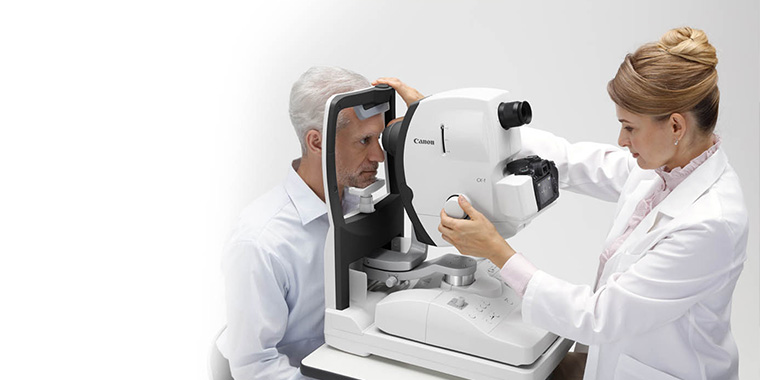The Advantages And Disadvantages of Various Refractive Surgical Treatments for Enhanced Eyecare

LASIK Surgical Treatment
LASIK surgery is a typically carried out refractive procedure that intends to fix vision concerns such as nearsightedness, farsightedness, and astigmatism. Throughout the procedure, a slim flap is produced on the cornea, and a laser is utilized to improve the underlying cells, correcting the refractive mistake.
Among the key advantages of LASIK surgery is the fast enhancement in vision experienced by lots of people. Most people see a considerable enhancement in their sight quickly after the treatment, with marginal downtime required for recuperation. In addition, LASIK is recognized for its high success rate and low incidence of issues when performed by skilled cosmetic surgeons. However, like any type of surgery, LASIK additionally lugs some risks, including completely dry eyes, glow, halos, and under or overcorrection of vision. It is important for people thinking about LASIK surgical procedure to go through a thorough analysis by an eye care specialist to identify if they are suitable candidates for the procedure.
PRK Treatment
The PRK treatment, also recognized as Photorefractive Keratectomy, is a kind of refractive surgical procedure that aims to fix vision issues similar to LASIK surgical treatment. Unlike LASIK, which includes developing a flap in the cornea, PRK functions on the surface layer of the cornea.
One of the benefits of PRK over LASIK is that it gets rid of the risk of flap-related difficulties given that no flap is created throughout the surgery. This can be useful for people with slim corneas or those associated with contact sporting activities where eye trauma is a possibility. Nevertheless, the recuperation time for PRK is generally much longer contrasted to LASIK, as the outer layer of the cornea requires time to regenerate after the treatment. Regardless of the longer recovery period, PRK can be a suitable choice for people seeking vision improvement surgery.
SMILE Surgical Treatment
A sophisticated refractive surgery method getting appeal in the area of ophthalmology is SMILE Surgical treatment. Tiny Laceration Lenticule Removal (SMILE) is a minimally intrusive treatment that deals with vision by reshaping the cornea using a femtosecond laser. Unlike conventional LASIK surgical treatment, SMILE Surgical procedure includes producing a tiny cut in the cornea to draw out a lenticule, which causes less disruption to the corneal structure and potentially quicker healing times.
Among the main advantages of SMILE Surgical procedure is its capacity to treat myopia (nearsightedness) and astigmatism with high accuracy, resulting in excellent aesthetic results for clients. The minimally invasive nature of the treatment likewise lowers the threat of problems such as dry eye syndrome, making it a favorable option for people seeking refractive surgical procedure.

LASEK Strategy
Having actually checked out the benefits and considerations of SMILE Surgical procedure, one more notable refractive surgical treatment strategy worth taking a look at is the LASEK Technique. LASEK, which stands for Laser-Assisted Subepithelial Keratectomy, is a form of laser eye surgical procedure that intends to deal with refractive mistakes such as nearsightedness (nearsightedness), hyperopia (farsightedness), and astigmatism.
Unlike LASIK, LASEK does not include creating a corneal flap. Rather, during a LASEK treatment, the doctor makes use of a diluted alcohol remedy to loosen the thin external layer of the cornea, called the epithelium. This layer is after that carefully relocated apart to permit the laser to improve the underlying corneal tissue. When the cornea has been improved to the preferred level, the epithelial layer is rearranged.
One of the key benefits of LASEK is that it can be appropriate for people with thin corneas who might not be good prospects for LASIK. Additionally, LASEK typically causes minimal post-operative pain and a quicker recovery time contrasted to PRK. The aesthetic healing procedure with LASEK may be somewhat longer than with LASIK.
Implantable Contact Lenses
Implantable Get in touch with Lenses supply a long-lasting vision improvement service andalusia pediatrics for people looking for an option to typical contact lenses or glasses. These lenses, likewise referred to as phakic intraocular lenses, are surgically inserted right into the eye to deal with refractive errors such as myopia (nearsightedness), hyperopia (farsightedness), and astigmatism. cardiologist andalusia. Unlike standard call lenses that rest on the surface of the eye, implantable get in touch with lenses function within the eye itself, offering clear vision without the demand for day-to-day maintenance or removal
One of the crucial benefits of implantable call lenses is their permanence. Once placed, they can stay in the eye forever, supplying consistent and steady vision modification. Furthermore, these lenses can be a superb option for individuals who are not great prospects for laser eye surgical treatment or that choose a relatively easy to fix vision improvement treatment.
Nonetheless, implantable call lenses do lug some threats, consisting of the possibility for cataracts or raised eye stress. It is crucial for individuals considering this option to seek advice from an eye care specialist to establish if implantable call lenses are the appropriate selection for their details demands and eye health and wellness.
Final Thought
Finally, each type of refractive surgery has its own benefits and negative aspects. LASIK surgical procedure is preferred for its fast healing time, while PRK procedure may be suitable for patients with slim corneas. SMILE surgical treatment provides minimal pain throughout the procedure, yet LASEK strategy may have a longer healing procedure. Implantable get in touch with lenses offer an alternative for those that are not appropriate candidates for typical surgical treatments. Clients should seek advice from with their eye care service provider to establish the finest option for their specific requirements.

Generally, SMILE Surgical procedure presents an encouraging option for individuals looking to boost their vision through refractive surgical treatment.